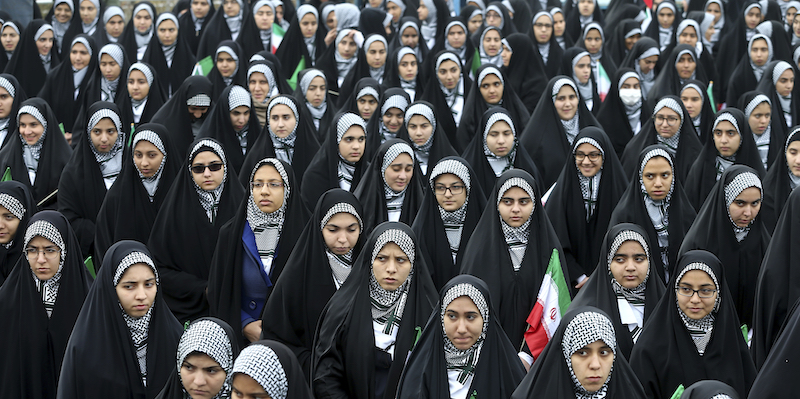In Iran, more than two hundred female students from fourteen different girls’ schools were reportedly deliberately poisoned with chemical compounds in an attempt to keep them away from schools. The case of the recurring poisonings, which also led to some hospitalizations of girls and boys, began in December, but in recent weeks there had been demonstrations by the parents of the poisoned students to protest against what was happening. On Sunday, Deputy Health Minister Younes Panahi finally confirmed that the poisonings they were “intentional”.
On various occasions up to last week in four cities of Iran the students of some girls’ schools had had health problems after being at school, where on some occasions they had encountered peculiar smells in the classrooms. The symptoms were nausea, headache, cough, difficulty breathing, palpitations and states of acute sleepiness: in dozens of cases short hospitalizations had been required.
The official statement by a government official, also confirmed by Homayoun Sameh Najafabadi, a member of the parliament’s health committee, represents a change of attitude on the part of the regime, which until ten days ago defined the news of the poisonings as “unconfirmed”. .
Panahi did not name the possible perpetrators of the attacks, but according to some local media, the girls were poisoned by religious extremist movements, probably inspired by the policies of the Afghan Taliban, which in recent months have banned girls from going to schools. The intention, according to the deputy minister, was to achieve the “closure of all girls’ schools”
The poisonings began in Qom, a city of 1.2 million inhabitants 160 kilometers south of the capital Tehran: it is considered a “holy” city in Iran, home to many institutions of the Iranian clergy and various seminaries for Shiite theological studies which they have hosted most of the country’s leaders. In Qom, some schools have been attacked with chemical compounds several times, but cases have been recorded also to Tehran, Ardebil and Boroujerd.
The square in front of a mosque in the city of Qom (AP Photo/Vahid Salemi)
The deputy minister told a press conference that the chemical agents could not be defined as “chemical weapons and that they were mostly treatable without the use of aggressive treatments”. However, in Qom it had been necessary to close the schools for two days, after the repetition of the cases had caused a justified alarm among the students and their families. On February 14, several hundred people protested outside the local government building in the city of Qom.
Feb. 10, 14 – Qom, north central #Iran
The families of girl students who were poisoned while in school rallied outside the Governor’s office today.
Numerous students in a at least 12 girls’ schools were poisoned with an unknown gas in the past weeks in Qom. pic.twitter.com/1A5LnPI1i9— Iran News Wire (@IranNW) February 14, 2023
In recent weeks, part of the opposition movements to the Iranian regime had accused the country’s authorities for the cases of poisoning, linking them to the repression of protest movements that have been underway for several months in the country. The protests began in September last year after the death of Masha Amini, a 22-year-old girl who was arrested by the so-called morality police for wearing her veil incorrectly. The movements for women’s liberation had been central at least in the initial phase of the protests, which the regime brutally repressed: it is estimated that at least 500 demonstrators died in the clashes, while four of them were sentenced to death following trials summaries.
